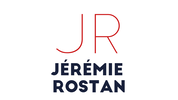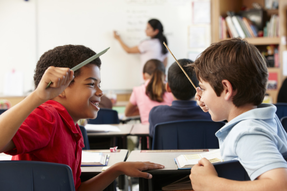|
Reprimands, i.e., “verbal disapproval, including threat or scolding, in response to inappropriate behavior” (all quotes are from the original article cited below) are the dominant classroom strategy of most educators. They are not only their most common, but really their default, automatic response to student disruption or disengagement. To the contrary, praise, i.e., “verbal indication of approval following student behavior” is greatly under-utilized in schools, and its use tends to decrease as students age. The most likely explanation is that teachers see students’ on-task behaviors as normal, and thus not worthy of particular praise. After all, following instructions and not being disruptive is simply expected. However, this approach fails to see that meeting behavioral expectations is an integral part of students’ learning. Just like any other skills, students only develop these abilities over time, and with the help of their teachers, notably in the form of useful feedback.
From a behaviorist point of view, rewarding desirable behaviors or punishing undesirable ones might seem almost identical. Such is not the case, in reality, if one considers the complexity of social-cognitive learning. First, praising good behavior is actually more informative: reprimanding a student for his behavior does not necessarily tell them what to do instead, or how to do it. Next, while praise is encouraging, reprimands are confrontational. This matters because students are much more likely to take as role models adults with whom they have a positive relation, which includes feeling valued and cared for. For that reason, reprimands actually often lead to more disengaged and disruptive behaviors. As Coercion Theory explains, this is even more the case when such behaviors get reinforced (e.g., being sent to the Dean’s office, and thus not having to be in class.) In this regard, educators should keep in mind that reprimands can actually be rewards when being disruptive or ostensibly disengaged is part of a student’s identity and the only behavior for which they receive recognition, if not validation, in the classroom. This is even more true for students who might transfer from their home environments certain scripts related to child-adult interactions. To test the relative effectiveness of praise and reprimands as classroom management strategies, a team of researchers collected data over 3 years from 151 classrooms in 19 different American elementary schools. About half of the teachers were instructed to use their own classroom management strategies, while the other half used a praise-based program developed by the University of Kansas called Class-Wide Function Related Intervention Teams (CW-FIT). Some of the main aspects of this program include:
Classrooms were observed 16 times on average, with each observation lasting for 20 minutes and recording every 30s whether the whole class was on- or off-task (one or more disengaged or disruptive student.) In addition, observers tracked teachers’ use of praise and reprimands and calculated their Praise-to-Reprimands Ratio (PRR). Results confirmed the effectiveness of the CW-FIT program, which was positively associated with whole-class on-task behavior. More precisely, this intervention increased the on-task behavior metric by 8.5 percentage points on average--or three weeks of additional instruction time over the course of a year. The data also supported the existence of :
According to the researchers’ calculations, as the ratio of praises to praises and reprimands changed from 0 to 1, on-task behavior could be predicted to increase by almost 30 percentage points. The findings being correlational, one could wonder whether the effect simply runs the other way, more frequent off-task behavior leading to more frequent teacher reprimands. However, the study being longitudinal, this would still mean that reprimands did not effectively decrease off-task behavior over time. Of course, teacher reprimands may sometimes be needed; but for that reason it is essential that teachers use a praise-to-reprimands approach to mitigate the potential negative effects of these reprimands on student behavior. Reference: Caldarella, Larsen, Williams, Downs, Wills, Wehby, “Effects of teachers’ praise-to-reprimand ratios on elementary students’ on-task behavior”, Educational Psychology, January 2020.
0 Comments
Your comment will be posted after it is approved.
Leave a Reply. |
|
Proudly powered by Weebly

